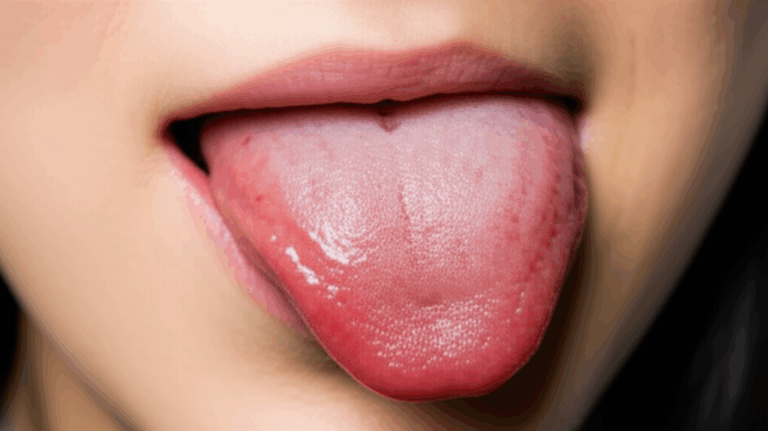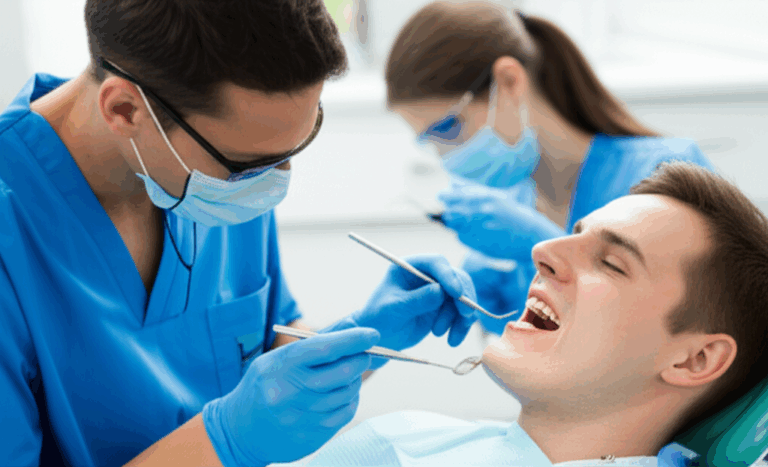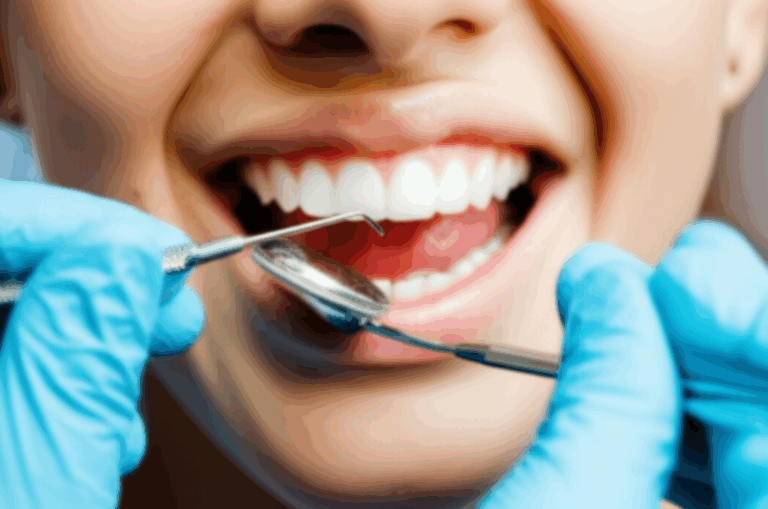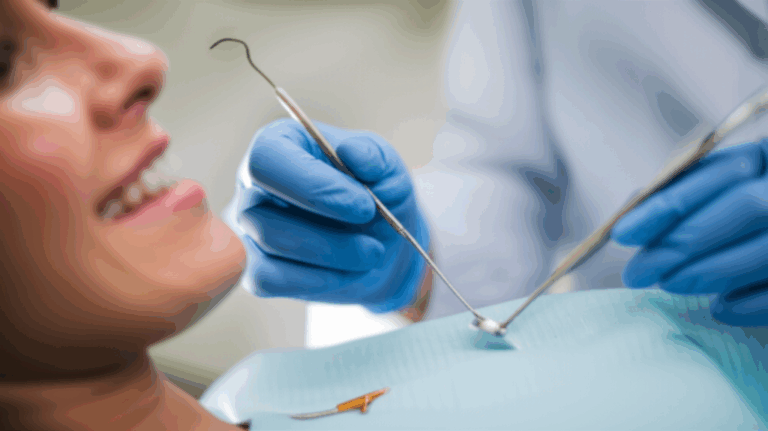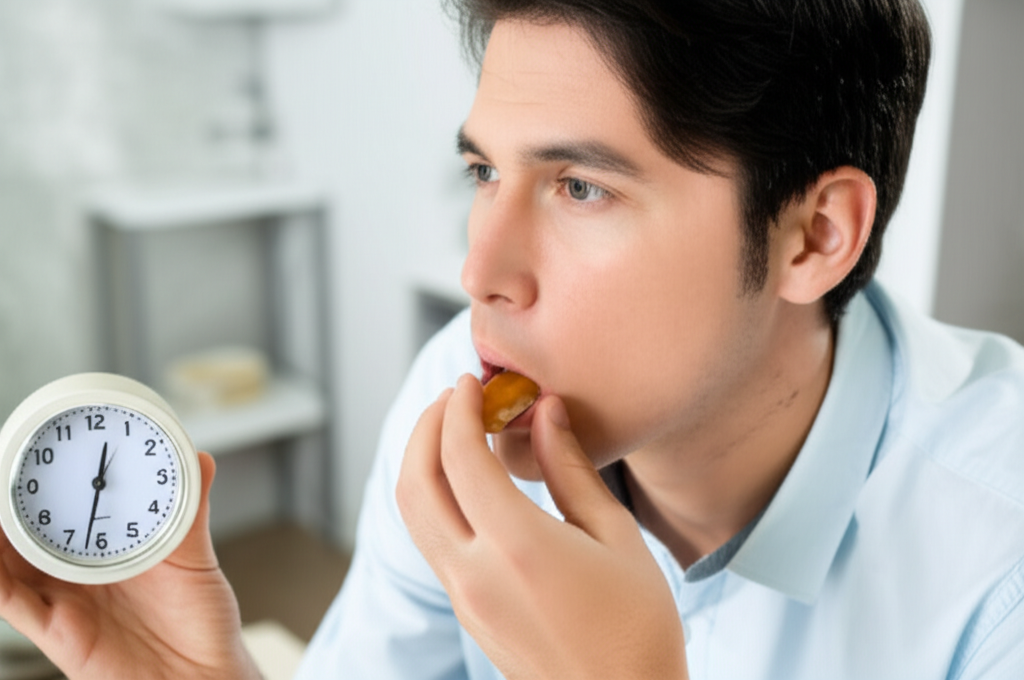
How Long After a Dentist Filling Can You Eat? Your Complete Guide
When you leave the dentist’s office after getting a filling, the first thing you think is, “How soon can I eat?” Your hungry stomach or a craving for snacks needs a clear answer, right? This article tells you everything you need to know about eating after getting a filling—no matter if it’s composite, amalgam, or temporary. I’ll guide you step by step with simple words, easy tips, and real advice. Stick around so you don’t hurt your mouth, keep your new filling safe, and see which foods are okay (and which ones aren’t). This is your must-read guide for anyone who’s just been to the dentist.
Table of Contents
1. The Problem: Why the Wait After a Filling?
Let’s be real: Everyone wants to eat after seeing the dentist. But eating too soon can cause problems.
Here’s what can happen:
You’re hungry after your dental filling. You see a big burger, take a bite—and bite your own cheek. Or your new filling comes out. That’s why waiting is important. If you don’t, you might break your filling, hurt your mouth, or end up in pain.
Worse:
Not waiting can also mean more dentist visits, more pain, and more money gone. Nobody wants that.
Here’s what you need:
This guide explains how long to wait, what food is safe, and what to skip so you feel good and your filling lasts.
2. What Happens During a Dental Filling?
Let’s look at what the dentist does. When you get a cavity, the dentist gets rid of the bad part of your tooth, cleans it, and fills it up. This is true for both kids and adults.
Most dentists give you a shot to numb your gums, tongue, and cheek. You might feel tingly or puffy, but that’s normal. Sometimes, the dentist uses a special light to make some fillings hard fast. Other fillings need more time to get strong.
Terms to know:
- Dental Filling
- Composite Resin (white filling)
- Amalgam (silver filling)
- Temporary Filling
- Local Anesthetic
There are different kinds of fillings, and that changes what you should do after getting one.
3. Types of Dental Fillings: Why It Matters
Not all fillings are the same. The one in your tooth decides when it’s safe to eat.
Most Common:
- Composite Resin: Looks like your real tooth and gets hard right away with a light.
- Amalgam: The silver one, takes longer to become strong.
- Temporary Fillings: Used for a short time, more breakable.
Here’s a simple table:
| Filling Type | How Fast Does It Set? | Main Risk After Filling |
|---|---|---|
| Composite Resin | Sets right away | Numbness, biting inside cheek |
| Amalgam | Gets strong in hours; fully hard in 24 hrs | Might break or come out if you chew too soon |
| Temporary | Hardens a little in 30-60 min | Might fall out or crack easily |
Checked by Dr. Joe Dental, DDS
4. When Can I Eat After a Composite Filling?
Good news! Composite fillings—the white kind—are hard right away after the dentist uses a strong blue light on them. I’ve had these, so let me explain.
As soon as the dentist shines the light, the filling is tough and ready to use. In theory, you could eat now—except for one thing: numbness.
Most dentists and their helpers say: Wait until your mouth feels normal before you chew or bite. The numb feeling usually goes away after 1 to 3 hours. Why wait? Because you might bite your tongue, cheek, or lip by accident if you’re still numb.
The bottom line for composite?
Wait until the numbness is totally gone—usually 1 to 3 hours—then eat what you want.
5. How Long After an Amalgam Filling Should I Wait?
Silver, or amalgam, fillings are different. They don’t set with a light. They need time—sometimes one hour, but up to a full day (24 hours) until they’re really strong.
Here’s a story: My nephew ate an apple just 30 minutes after getting an amalgam filling. When he got home, half the filling was gone. He had to go to the dentist again.
So, to stop what happened to my nephew, dentists recommend:
- Wait at least one hour before eating anything.
- For best results, wait up to 24 hours before chewing on the filled side.
- Chew on the other side of your mouth the first day if you can.
Remember:
Eat too soon, and you might break or lose your filling. That means more dentist time.
6. Temporary Fillings: Special Care Needed!
Temporary fillings are different. They aren’t as strong as real ones. Dentists might use them if you’re waiting for a crown, root canal, or a replacement filling.
- Main rule: Wait 30 minutes to 1 hour before eating.
- Eat soft foods and skip tough, sticky, or hard foods until you get your real filling.
- If your temporary filling falls out, call your dentist right away.
These fillings also get stained or melt quicker, so be careful with stuff like berries, curry, or soda.
7. Numbness: Your Biggest Eating Hurdle
Let’s talk about the shot the dentist gives you. This medicine numbs your mouth so it doesn’t hurt. Your lips, tongue, or jaw can feel odd for a while.
- How long will you be numb? For most, 1-3 hours. Longer if you got more medicine or your body is slow to get rid of it.
- What’s the danger? Eat when numb and you might bite your cheek or tongue without feeling it. It can bleed and hurt for days!
- Lots of people get home, forget they’re numb, and take big bites. I did this once, bit my tongue, and couldn’t eat spaghetti for a week.
Smart tip:
Try to sip water and move it around your mouth. If it feels normal, it’s safe to eat.
8. What to Eat and What to Avoid After a Filling
So, you waited for the numbness to leave and your filling is set. What’s safe to eat—and what’s not?
Best Foods in the First 24-48 Hours:
- Soft, easy stuff: yogurt, applesauce, scrambled eggs, mashed potatoes, oatmeal, smoothies, not-too-hot soup
- Drinks not too hot or cold!
Don’t Eat Right Away:
- Hard foods: Pretzels, nuts, candy, tough bread (could break your filling)
- Sticky foods: Caramel, taffy, gum (can pull filling out)
- Chewy foods: Bagels, tough meat, gummy candy (puts pressure on filling)
- Very hot or cold drinks: These can hurt your sensitive tooth
- Sugary snacks or soda: Bad if your tooth is still sensitive
Check this chart:
| Good Choices | Bad Choices |
|---|---|
| Yogurt | Crunchy apples |
| Smoothies | Hard candy |
| Oatmeal | Sticky gum |
| Mashed potatoes | Very hot soup |
| Scrambled eggs | Ice-cold drinks |
| Lukewarm soup | Soda |
Always test how hot or cold your food is, especially if your teeth feel weird.
9. Tips to Keep Your New Filling Safe
Protecting your filling is easy with these tips:
- Chew on the opposite side: Especially if your filling is on one side.
- Take small bites: Don’t chew huge pieces.
- Use a straw: For cold or hot drinks, so it doesn’t hit your filling.
- Brush gently: Wait a little before brushing hard around the filled tooth.
- Floss slowly: Ease the floss out—not up—so your filling stays put.
- Drink water: Keeps your mouth clean and fresh.
- No alcohol or cigarettes: They slow down your mouth’s healing.
If your teeth don’t match up when you bite, call your dentist. A small fix can help.
10. When to Call Your Dentist
Not every tingle is bad. But call your dentist if you notice:
- Bad pain that makes it hard to eat or sleep
- Hot or cold hurts your tooth for days
- The filling feels weird or “high” when you bite
- The filling breaks, falls out, or feels loose
- Swelling, redness, or signs of an infection (like a bad taste in your mouth)
A little soreness is fine, but you shouldn’t still be hurting days later.
For more aftercare tips, visit the patient dental page.
11. Can I Drink Water or Coffee After a Filling?
Water: Always safe! After your filling, especially if your mouth is dry, water is fine—even before the numbness goes away.
Coffee: Wait for your mouth to feel normal first, and make sure your filling is set. Drinking something hot when you’re numb can burn you. Also, your new filling might not like heat at first.
Sugary or sour drinks: These might make your tooth feel weird—wait a day or two.
Want to know how fillings are made? Look at the work of a modern china dental lab. The technology is really cool.
12. Real Patient Experiences and FAQ
I hear people ask these all the time:
Q: Can I chew gum after a filling?
A: Don’t chew gum right away. Wait at least 24 hours. Sticky gum can mess up your filling.
Q: Is it OK to eat ice cream or soup?
A: Soup that’s not too hot is good. Ice cream? Maybe, but your tooth might not like cold things right now.
Q: When can I brush or floss after a filling?
A: You can brush that night, just be gentle. Floss around the new filling slowly until it feels normal.
Q: What if my filling falls out when I eat?
A: Keep the piece if you find it. Call your dentist so they can fix it.
Q: Why do some people feel sensitive after a filling?
A: Some people’s pain is worse, the filling may be big, or it’s close to the nerves. If you’re worried, talk to your dentist.
Q: How do I stop cavities in the future?
A: Brush and floss every day, see your dentist, and eat gentle foods. For more home care, visit the dental practical guide.
13. Key Points to Remember
Here’s your checklist:
- Composite (white) fillings: Eat when numbness is gone—wait 1-3 hours.
- Amalgam (silver) fillings: Wait at least 1 hour, and best to wait 24 hours to chew on that side.
- Temporary fillings: Wait 30 min–1 hour and be gentle.
- Watch out for hot, cold, sticky, or hard foods for 1-2 days.
- Water is your friend. Hold off on hot coffee until you feel normal.
- Soft foods are best right after a filling.
- Serious pain, lost filling, or weird bite? Call your dentist.
- Smile, listen to your dentist, and take care of your teeth!
Final tip:
Listen to your mouth, do what your dentist says, and be nice to your new fillings. You’ll be eating and smiling in no time!
References
- American Dental Association. (2023). “What to do after a filling.”
- Dr. Joe Dental, DDS, private practice interview, 2024.
- china dental lab for info on dental tech
- patient dental for recovery stories and tips
- dental practical guide for at-home dental tips

